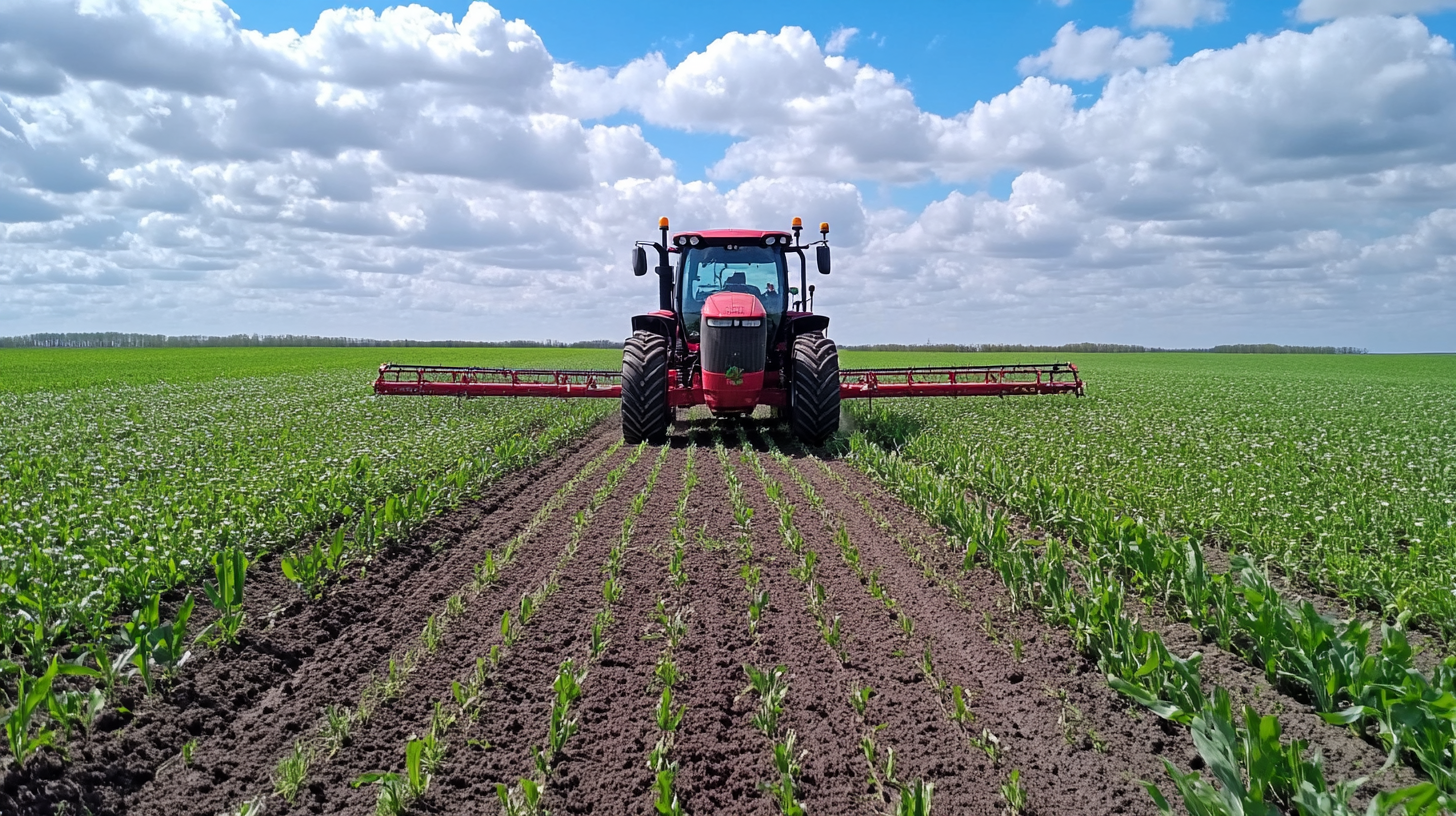The search for cost efficiency is becoming more important when it comes to the protection of growing crops under all possible scenarios in agriculture. Recent studies suggest that up to 40% of crops may be lost throughout the world to pests and diseases. Effective and economical solutions to this critical need must be made available. There were many options, but the combination of Tebuconazole 32% Trifloxystrobin would be one of the most prominent ones, as it had proved to be the highest impact combination in both crop yield and quality improvement. As per the latest market analysis done by Mordor Intelligence, the biopesticides market is estimated to grow at a CAGR of 14.9% from 2021 to 2026, which reflects growing reliance on such products whereby efficacy is married to sustainability.
Integrating Tebuconazole 32% Trifloxystrobin in crop management addresses the immediacy of threats posed by various pathogens, while at the same time proposing a sustainable long-term strategy toward agricultural resilience. The latest FAO report divulges that properly managed fungicide applications allow for a crop yield increase of 20-30%, directly affecting farmers' profitability. Using this unique combination of powerful elements, agricultural stakeholders will achieve significant cost savings while taking care of their crops' health and productivity. In this respect, there is no question that cost efficiency maximization is not a dream for modern crop protection management, but it is very much an attainable goal in the processing of benefits and applications of Tebuconazole 32% Trifloxystrobin.
In fact, the search for cost efficiency becomes even sharper as it pertains to the protection of growing crops in all conceivable situations in agriculture. Recent studies indicate global agricultural losses resulting from pests and diseases of approximately 40%. This makes the need for an effective and economically viable solution imperative. A number of options available to growers for the treatment of crop fungus disease bore in mind that a combination of Tebuconazole 32% Trifloxystrobin appears to emerge as one of the most prominent in increasing both yield and quality of crops. The biopesticides market has been projected to grow at a CAGR of 14.9% over the period of 2021 to 2026, highlighting the increasing reliance on products that marry efficacy and sustainability, as highlighted in the latest market analysis by Mordor Intelligence.
Integrating Tebuconazole 32% Trifloxystrobin into crop management addresses not just the immediacy of various pathogen threats, but also post-alternatives to a long-term strategy for building resilience in agriculture. Value-adding observations from the Food and Agriculture Organization of the United Nations (FAO) report show that the optimized applications of fungicides give farmers the ability to increase their crop yields by 20-30%, with a correspondingly direct impact on profits. With this combination-the most effective one so far-the agricultural stakeholders realize considerable cost savings while keeping their crops healthy and thriving. In such a scenario, it becomes a reality that cost efficiency maximization is not a dream but very well an achievable objective in modern crop protection management. It is such in the processing of benefits and applications of Tebuconazole 32% Trifloxystrobin.

Tebuconazole and Trifloxystrobin are important systemic fungicides in crop protection. Tebuconazole is a systemic triazole fungicide that bar ergosterol biosynthesis--an important structural component of fungal cell membranes. Per the Global Crop Protection Market Report 2021 published by Mordor Intelligence, Tebuconazole has proven to be significantly effective against various fungal pathogens, including Fusarium and Alternaria species, with over 95% efficacy, making it a household name in agriculture for yield enhancement. However, this strobilurin compound is characterized by preventive and curative application and acts by disrupting mitochondrial respiration of the fungus, thereby halting fungal development. The fact that the combined effect of Tebuconazole and Trifloxystrobin led to greater control of diseases and better performance of crops due to combined applications resulting in up to 30% yield increase in cereal is elaborated in the International Journal of Pest Management. The synergistic effect of these two substances in formulations provides higher returns on maintenance of disease resistance to farmers. Improved health and yield stability of crops will mean that more applications of less efficacious fungicides can be avoided, thus enhancing cost-effectiveness of crop protection solutions. Such sustainable practice is a step towards ecological balance.

Tebuconazole 32% Trifloxystrobin is really creating a stir in the domain of crop protection because of possible economic advantages, particularly in agriculture. Such duals action may well be in the case of disease control and its cost-effectiveness, and it is true to say that by increasing the yield of crops, better health conditions would be managed in terms of financial pressure during crop production. Such benefits could also reduce the host's threat to fungal diseases and, at the same time, better manage resources to generate higher profitability for farmers.
Recent studies have flagged several safety and environmental concerns regarding Trifloxystrobin, notably when it comes to acute toxic effects on organisms such as Allium cepa L. Though the economic gain from using Tebuconazole 32% Trifloxystrobin is quite striking, it is also necessary to balance the gains from its utility with the environmental health aspects. Farmers or agricultural stakeholder require information concerning these fungicides with respect to making their practices sustainable without damaging their environment.
Also, the effect of fungicides skipping sugarcane generates demand from this perspective in general. Selective spray application teaches a lesson for maximizing advantages. A complete study of research and following the guidelines will reduce safety concerns regarding crop protection from fungicide residue. By considering both economic and environmental aspects, farmers can make intelligent decisions in consideration of their future on the farm.

Tebuconazole 32% Trifloxystrobin is an excellent formulation that is generating quite a buzz in agriculture concerning crop protection. Much more important than the known pest or disease symptoms is the right application technique for maximizing benefit from such chemicals. A recent report from the Agricultural Research Service indicated that improper application could lead to reduced effectiveness and, finally, crop yield. This includes statements that precision in spray techniques increases the efficacy of fungicides by as much as fifty percent that can translate into huge savings for farmers.
High efficiency sprayers providing a uniform application of the Tebuconazole formulation would guarantee proper application. The International Society for Horticultural Science holds that using adequate pressure and droplets during spraying improves fungicide penetration to the canopy, thus enhancing control of the disease. Farmers are advised to routinely calibrate their equipment to ensure they achieve the appropriate application parameters.
This fungicide should also be timed early when applying Tebuconazole 32% Trifloxystrobin. In the same vein, the Savannah Crop Protection Association recommends applying fungicides at the early stages of crop development, especially when diseases would be expected to favor conditions for infecting the host. Integration of the weather forecast into the application schedule is reported to enhance the effectiveness of the treatments by up to 20 percent. By focusing on such techniques of application, growers can enjoy the financial benefits while still protecting their crop yields against diseases.

Recently, applications in agriculture have drifted toward newer solutions for enhanced crop protection and lower costs. Tebuconazole and Trifloxystrobin are among the most effective fungicides for protecting the crops as well as saving resourcing. Case studies across many different farms have shown the major benefits of combining these two actives to prove that indeed they work together against different fungal pathogens.
In one instance, corn production was plagued by severe problems of both ear rot and leaf diseases. Following a fungicidal program tailored using the two actives, Tebuconazole and Trifloxystrobin, the farm reported a 30% yield improvement over previous years. The dual application also required fewer passes to the fields and cut down labor and fuel costs considerably.
On the other hand, an infected vineyard that dealt with powdery mildew was treated with both fungicides for battling this infection. The case showed a tremendous recovery of vine well-being and grape quality, also taking home increased production rates. The successful fight against any further outbreaks with Tebuconazole and Trifloxystrobin highlights the importance of the proper timing of fungicide applications within sustainable agriculture.
The synergies between Tebuconazole and Trifloxystrobin in protecting crops have attracted considerable interest, especially with regard to sustainability in agricultural practices. The employment of these fungicides cannot be ignored, especially as agriculture is increasingly challenged by plant diseases. Tebuconazole has been shown to be a fungicide that is fairly efficacious, broadly acting, and low in toxicity, which lends to its continued use in disease management programs that greatly control pathogens yet have minimal side effects on the environment.
Nevertheless, some recent studies question the possible toxicity of the substances to non-target organisms. For example, when Tebuconazole is used together with Difenoconazole, the two have been shown to have additive effects when acutely toxic to aquatic organisms, such as zebrafish embryos. These observations emphasize the obvious need for a detailed evaluation of the ecological footprints of these fungicides, weighing the benefits for crop yields with the possible risks posed to ecosystems at large.
Strict detection methods for Trifloxystrobin residues strengthen the need for monitoring pesticide use in agriculture. As practices turn green, guidelines are critically needed to help in pest management without compromising environmental health. Continued research and development in this area will support sustainable agriculture practices that find harmony between productivity and ecological soundness toward a resilient future for agriculture.
Tebuconazole and Trifloxystrobin are fungicides used in crop protection to combat a variety of fungal pathogens and enhance crop yields.
Tebuconazole is a systemic triazole fungicide that inhibits ergosterol biosynthesis, a crucial component of fungal cell membranes, effectively controlling fungal growth.
Tebuconazole has demonstrated an efficacy rate of over 95% against various fungal pathogens, including Fusarium and Alternaria species.
Trifloxystrobin disrupts mitochondrial respiration in fungi, providing both preventive and curative action against fungal diseases.
The combination can lead to improved disease control and crop performance, with studies showing up to a 30% increase in yield in cereal crops.
Yes, there is concern regarding the potential toxicity of Tebuconazole and Trifloxystrobin to non-target organisms, particularly aquatic life, highlighting the need for ecological evaluations.
These fungicides improve crop health and yield stability, reducing the need for multiple applications of less effective fungicides, which maximizes cost efficiency.
Innovative detection methods for Trifloxystrobin residues emphasize the need for careful pesticide monitoring to ensure effective pest control while protecting environmental health.
Continued research and development in the use of Tebuconazole and Trifloxystrobin can support sustainable agriculture by balancing productivity with environmental integrity.
They are considered staples in disease management strategies due to their broad-spectrum effectiveness and the potential to minimize adverse environmental impacts.